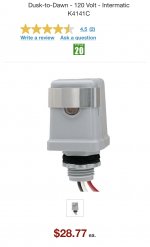220515-2043 EDT
If you understood how dimmers, solid-state switches, etc, worked, and further understood about the characteristic curves of various loads, then you would know why you experience the kind of results being described.
1. Many switching devices that also need electrical power for the electronics to function, and are a two terminal device, depend on at least some leakage current thru the switching device and load to provide this power.
A tungsten filament bulb, or for that matter a carbon filament bulb, provides a very low load resistance, or moderately low resistance, when the applied voltage to the bulb is small. Thus, there is a current path with sufficient current to provide power to the electronics when the switching device has been off that the electronics can function.
If the switching or dimming device has both a hot and neutral supplied as inputs, then there is no need for current to flow thru the switching device and the load to provide power to the switching device, and the load impedance can be as high as you want and the switching device will still work.
A tungsten filament bulb has a room temperature off state resistance of 1/10 or lower than at its stated operating voltage. My measurements on a 100 W 120 V bulb are 10.3 ohms with a Fluke 27 at room temperature, and calculated resistance at 120 V and 100 W is 144 ohms.
This change in resistance is from the change in filament temperature. But at both temperatures the filament can be considered a linear resistance.
What does an LED look like from a resistance perspective, it is a nonlinear characteristic. Three different manufacturers of 9 W 120 V LEDs all read about 5,000,000 ohms with the Fluke 27. Polarity did not matter. I have not measured at higher voltages.
You have to know how different devices work and their V-I characteristics to make any useful judgements.
.

